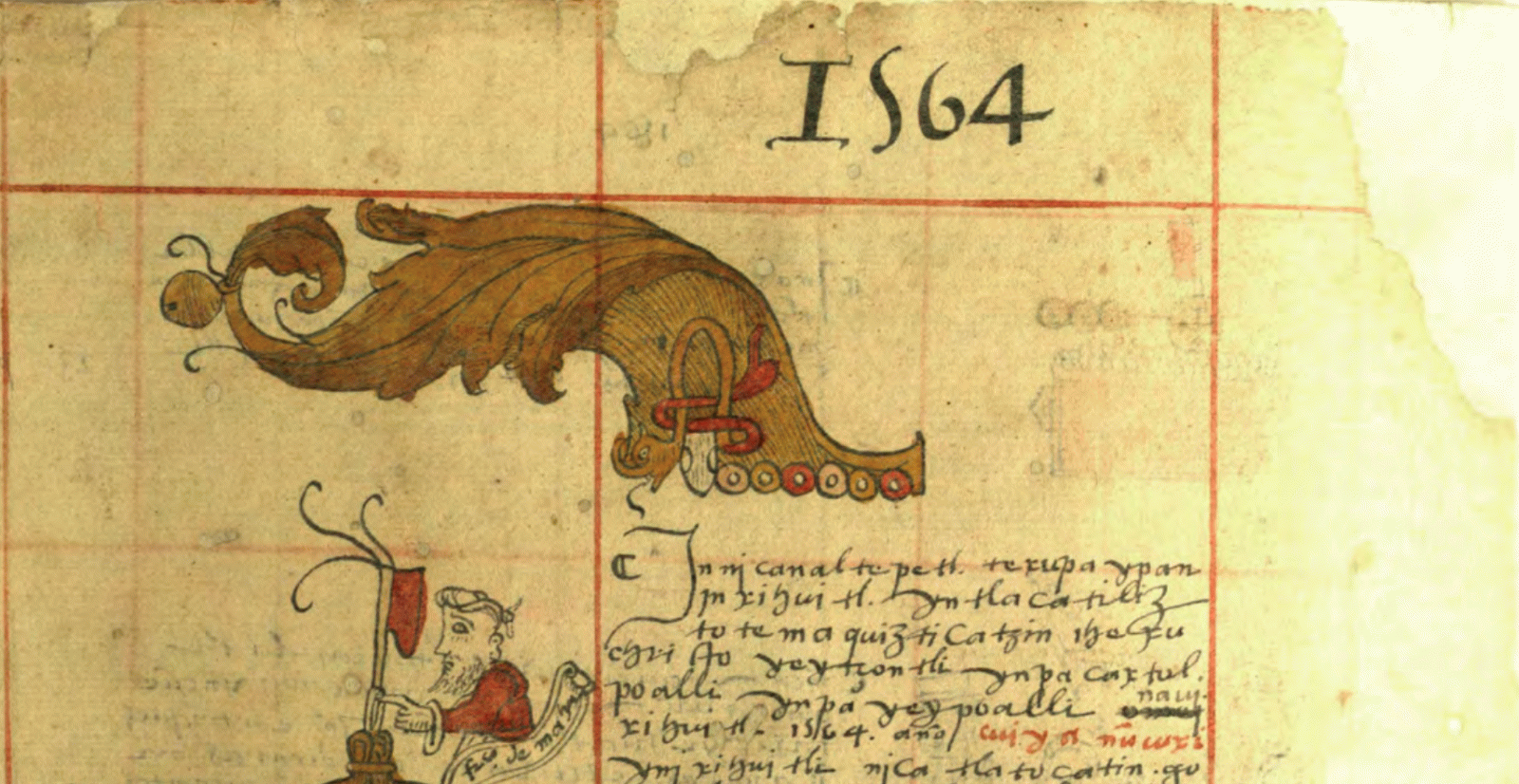4A Lab Seminar
Jamie E. Forde: Stone – Flowers – Silk: Ecology, Polychromy, and Utopia in Mexico’s Colonial Churches

Portion of page 61 of the Códice Sierra-Texupan, José María Lafragua Historical Library, Benemérita Universidad Autónoma de Puebla, México (public domain).
Over the better part of the 16th century, the highland region of Oaxaca, Mexico, was home to a thriving silk industry, first introduced by Spanish colonists who ferried jars of silkworm eggs and saplings of mulberry trees across the Atlantic to the Americas. These newly introduced organisms profoundly impacted not only Oaxaca’s ecology and economy—they also helped reshape its houses of religious worship and came to permeate ideological conceptions of sacred space. As Indigenous communities took control of this industry, raising and reeling raw silk and selling it to colonial craft guilds, they simultaneously often used the profits to outfit their local churches with brilliantly colored liturgical vestments, purchased at considerable expense. This talk examines how elaborate Christian religious objects made from materials like satin, velvet, and damask were metaphorically related to other colorful substances that were considered sacred in Indigenous worldviews, such as flowers, feathers, and precious stones. As the interiors of Mexico’s churches were bedecked with ever more shimmering and polychromic religious textiles, they became spaces that increasingly came to resemble prehispanic conceptualizations of what scholars now identify as the “Flower World”—an idyllic celestial place of sumptuousness and splendor in Native cosmologies. Thus, while Spanish missionaries conceived of the Mexican silk industry as a crucial vehicle through which to achieve their vision of a Christian utopia in the New World, Indigenous communities used silk objects to make manifest their own parallel, but quite distinct, vision of a paradisical and heavenly realm.
Jamie Forde is a lecturer of Pre-Modern Art in the department of History of Art at the University of Edinburgh. Trained as an anthropological archaeologist, his work has been published in scholarly journals including Ancient Mesoamerica, International Journal of Historical Archaeology, and Colonial Latin American Review. He has previously held research fellowships at academic institutions including Dumbarton Oaks, the University of Pennsylvania, the John Carter Brown Library, and the Newberry Library of Chicago. His research focuses on the architecture and visual culture of late prehispanic and early colonial Mexico, with particular attention on Indigenous aesthetic practices related to issues of materiality and temporality.
21 giugno 2021, ore 16:00
Online 4A_Lab Seminar. The event takes place online.
For KHI-externs: please register for this seminar at 4a_lab@khi.fi.it
Avviso
Questo evento viene documentato fotograficamente e/o attraverso riprese video. Qualora non dovesse essere d’accordo con l’utilizzo di immagini in cui potrebbe essere riconoscibile, da parte del Kunsthistorisches Institut in Florenz a scopo di documentazione degli eventi e di pubbliche relazioni (p.e. social media) la preghiamo gentilmente di comunicarcelo.


